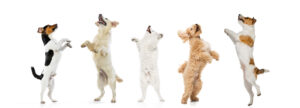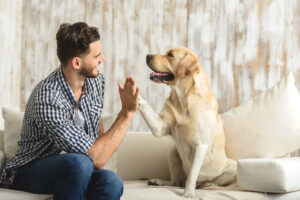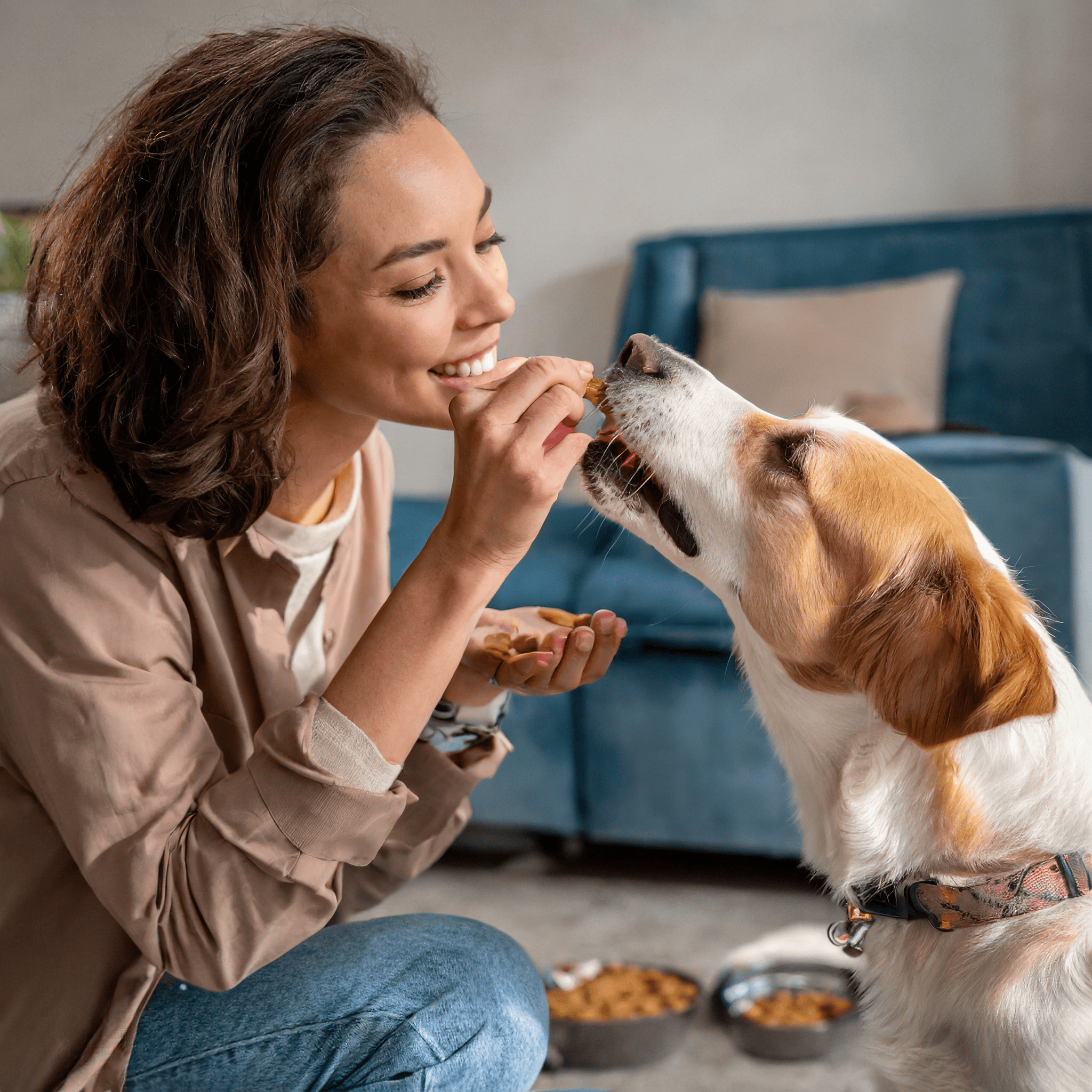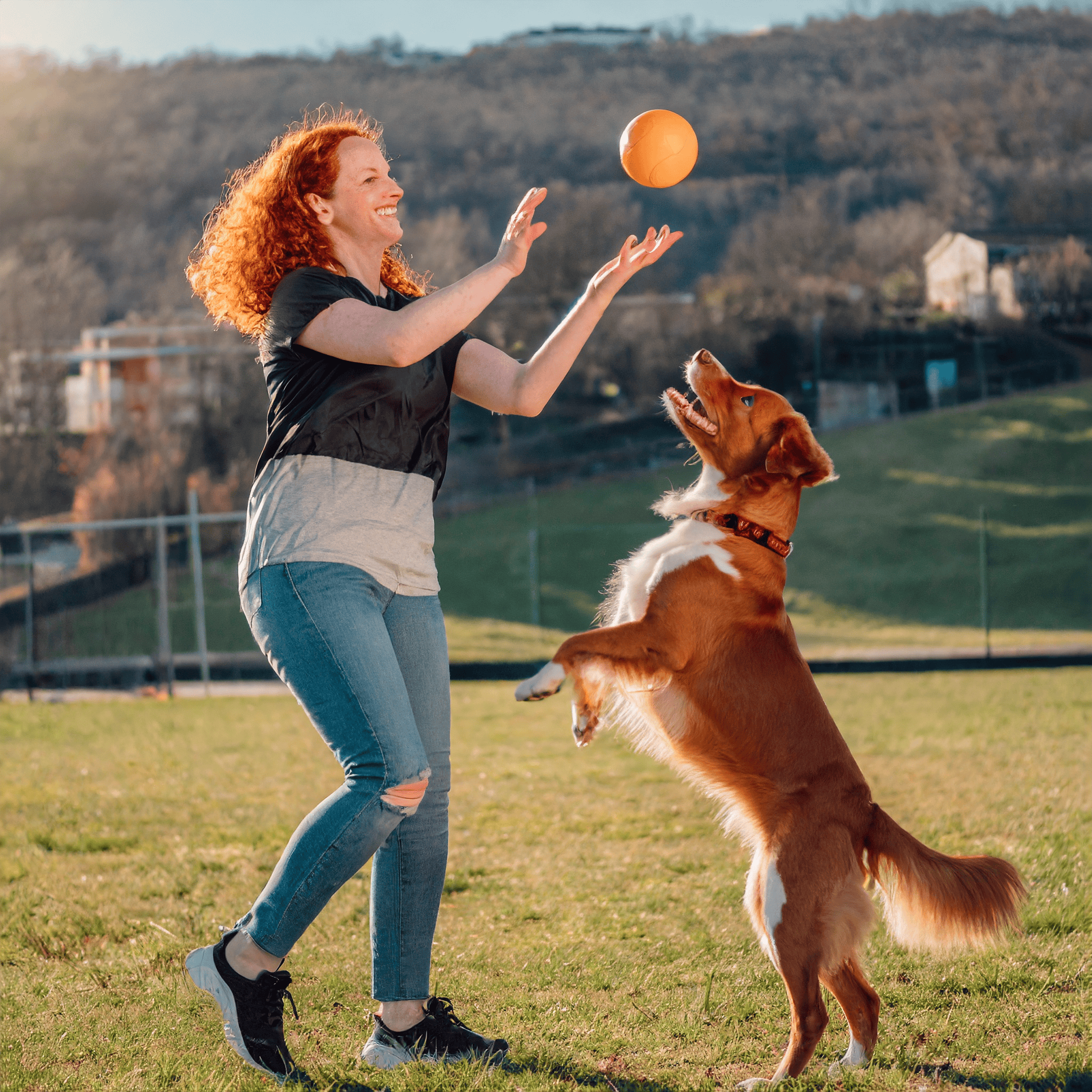I get so many questions about positive reinforcement training. And I am so happy to answer them!
One of the most commonly asked questions is whether positive reinforcement works for all dogs. I am here to say yes! I know firsthand.

I’ve worked with every type of dog over the decades. There is hope for every dog to learn. And positive reinforcement is the best way to train any dog.
Let’s explore the world of training our pups with love, laughter, and a sprinkle of treats.
Understanding the Magic
Positive reinforcement dog training is your golden ticket to teaching your four-legged friend.

It’s all about reinforcing positive behaviors by rewarding them. This makes the learning process an enjoyable experience for everyone.
As pet parents, we want to the best for our dogs. And dog learn best when we use positive reinforcement.
Now, you might wonder, what makes positive reinforcement methods so special? Well, imagine teaching your dog new skills with treats, praise, and a whole lot of fun. That’s the magic – turning each training session into a beautiful bonding moment!
The Four Types of Reinforcement in Dog Training
In the canine classroom, there are four main players when it comes to positive and negative reinforcement:
- Positive Reinforcement: Think treats, praise, and playtime – the superheroes of making good behaviors stick.
- Negative Reinforcement: There are some pretty mixed reviews on this one. It’s about removing something unpleasant when your dog does what you want him to do. I’ll talk more about this later.
- Positive Punishment: A major downer – introducing punishment to discourage unwanted behavior.
- Negative Punishment: Taking away something enjoyable to decrease the chances of a behavior happening again.
My Thoughts on Negative Reinforcement
Negative reinforcement means removing something your dog doesn’t like. While I am all about making dogs comfortable, I have a problem with negative reinforcement.
Why? Well, this training method removes the unpleasant thing only after dogs learn a desired behavior.
Let’s explore an example:
Imagine someone is walking their dog. The dog is pulling on the leash. This act of pulling is causing the dog to choke and cough. The dog walker lets the dog choke, hoping that the dog will understand the consequences of pulling on the leash. The dog walker wants the dog to learn that pulling=choking and not pulling=not choking.
That’s not how I roll. I want my dog to be comfortable all the time. I won’t make her suffer to encourage good behavior.
So, let’s keep it on the sunny side. My training sessions are filled with positive reinforcement training only!
Positive Reinforcement in Action
Imagine teaching your dog to sit. You ask him nicely. When your dog sits, you shower him with verbal praise, a pat on the back, and a tasty treat.
This way, your dog learns that sitting when asked makes you happy. He will be more likely to sit for you in the future. Why? Because your dog just wants to make you happy!
A lot of my dog’s skills are positively reinforced with TTouches. This is one of the best ways to reward my dog’s behavior. She loves TTouches, and I love bonding with her while I do them.
To Punish, or Not to Punish?
Now, let’s talk about positive and negative punishment.
Positive Punishment

I will never use positive punishment.
This usually involves scolding, hitting, choking or even shocking with a shock collar. It is my least favorite training method. And honestly, it breaks my heart.
Most dogs who are trained this way will develop unwanted behaviors. Whether it’s aggression, stress, or anxiety, punishment makes for unhappy pups. Please, please never use positive punishment when training your dog.
Negative Punishment
Negative punishment is about taking away good things to prevent unwanted behavior.
The term sounds a bit confusing because it’s a double negative. Have you ever heard that two wrongs make a right? Well, that kind of applies here.
Negative punishment can be a helpful tool when teaching your dog not to jump up on people. You can use this to teach your dog that jumping up redirects your attention.
If you get really excited and scratch your dog when he jumps up, you reward the jumping. Be careful not to do this if you want to train your dog to greet you from the ground.
Instead, when your dog jumps up, ask him to sit down. You redirect the good thing (your attention) to prevent unwanted behavior (jumping up). This works best when combined with positive reinforcement. How?
Well, I ask my dog to sit when she jumps up. Then when she sits, I shower her with praise. She gets my full attention again. This encourages the behavior I want (sitting instead of jumping up).
I rarely use negative punishment. The only time I ever use this method is when I redirect my attention to train a different skill I want. I will never take away my dog’s toys, treats, or meals.
Paws for Thought: Why Positive Reinforcement is Best
Now, why does positive reinforcement work better than other training methods? Well, for starters, it builds trust and strengthens the bond between you and your pup.
It’s like speaking a language your dog understands – the language of love, treats, and play. When you and your dog communicate in this special language, your relationship becomes stronger.
And it works! Studies have shown that dogs’ brains respond better to positive reinforcement. So it’s the best way to work with your dog instead of against her.
Plus, your dog will be so excited to learn when training sessions are positive. You’ll be amazed by how quickly you see progress.
“Sit” is Simple as S-I-T
The principles of positive dog training are as simple as one of your dog’s basic skills!
- Start on a Good Note: Begin each training session with something your dog loves. I like to start with a handful of treats or my dog’s favorite toy. If you don’t have anything on hand, then use your hands! TTouches are an incredible reward.
- Intention Setting Helps: Set an intention for your training session. Work towards a goal with your pup to keep your practice focused.
- Timing and Consistency is Key: Practice multiple times each day in 1 minute sessions to get the best results. Short and frequent training sessions work wonders. Why? Because dogs thrive on routine!
The Power of Verbal Cues and Body Language
Now, let’s dive into communication. Dogs, like us, respond to words. They also respond to tone of voice and our body language as well.
So, when I train my dog, I make sure my verbal cues are clear. I also want my tone and body to be encouraging. It’s like dancing with my dog: the words and movements work together.
I use a lot of verbal praise and speak in complete sentences. This communicates respect to my dog. She is a much better listener for it!
The Treat Tango

Treats are the gold stars of positive reinforcement training.
Find your pup’s favorite treat, whether it’s a crunchy biscuit or a meaty delight, and let the treat tango begin.
You can also use your dog’s food to help you train. You can hand-feed him his dinner as you work on his skills, one bite at a time.
I’ve found that treats are a great way to keep your dog motivated to learn new skills. But as I continue my 1 minute daily sessions with my dog, she responds best to praise and TTouches.
Although my dog loves treats, she loves praise even more. And TTouches are an excellent opportunity for us to bond as well.
Sometimes, I still train my dog with treats just to keep things interesting. But I recommend leaning into praise and TTouches as rewards for a job well done!
Incorporating Fun into Training

Training doesn’t have to be all serious business. Mix playtime into your sessions for a fun and engaging experience.
For example, I like to use a game of fetch to practice sit, stay, and come with my dog.
I ask her to sit and stay while I throw her frisbee. Then, I tell her to go get it while it’s high in the air. Once she leaps and catches it, I call her to come back to me.
You can use games to teach a new behavior or practice old ones. And you and your pup will have fun doing it!
Overcoming Challenges: Patience, Persistence, and Positivity
Every dog is unique. With uniqueness comes a special set of challenges. You may need to help your dog overcome some obstacles.
Be patient. In my experience, some dogs just need a little extra time and encouragement.
Take a deep breath when you feel frustrated. We’ve all been there! Keep training sessions short and exciting to avoid burnout.
Stay positive and your relationship with your dog will get you through tough times.
Lifelong Learning
Training isn’t a one-time activity. It’s a lifelong learning journey for both you and your dog.
Embrace each 1 minute session as an opportunity to strengthen your bond. Together, you can deepen your relationship and learn so much along the way.
Just remember to stay positive! Reward your dog for listening. Celebrate every little win, and your dog will listen more and more.
The Golden Rules of Dog Training
Here are my five golden rules to keep in mind:
- Be Patient: Rome wasn’t built in a day, and neither is a perfectly trained pup.
- Use Positive Reinforcement: Make learning a joyful experience.
- Practice 1 Minute at a Time: Keep your training sessions short and sweet. Do multiple 1 minute sessions each day to see the best results.
- Consistency is Key: Like your favorite song on repeat, consistency helps your pup catch the training groove.
- Speak to Your Dog with Respect: When telling your dog what you want, speak in complete sentences. Use please and thank you. Your dog will understand!
Positive reinforcement dog training turns everyday moments into exciting adventures. It’s about creating a combination of good behaviors, love, and lots of fun.
So, grab those treats, play your pup’s favorite game, and let the training party continue! Remember, the journey is as great as the destination.






